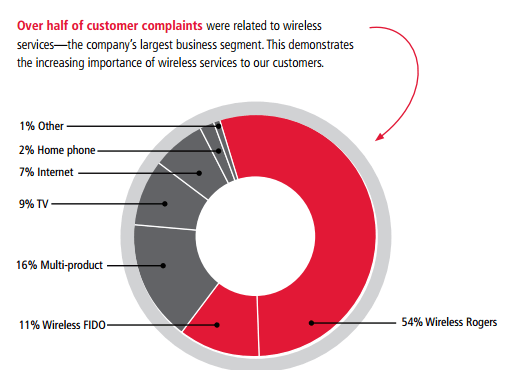 Following Verizon’s lead, AT&T has announced a new privacy policy that includes fine print allowing the company to track your website visits, location, viewing habits, mobile app usage, and numbers called and received. AT&T says it will aggregate the information collected and peddle it to businesses who want to learn everything they can about potential customers, store visitors, and viewers.
Following Verizon’s lead, AT&T has announced a new privacy policy that includes fine print allowing the company to track your website visits, location, viewing habits, mobile app usage, and numbers called and received. AT&T says it will aggregate the information collected and peddle it to businesses who want to learn everything they can about potential customers, store visitors, and viewers.
AT&T will likely earn millions from the enhanced surveillance of its customers, but none of those earnings will bring you a lower bill.
“The scope of the information collected is significant when one considers AT&T will be matching it with credit reports, mailing lists, and already-available demographic information,” says online privacy expert Thom Sonderland. “Although AT&T says they will not sell personally identifiable information to third parties, the company will have much more detailed information about their customers at their disposal for any internal use they want.”
AT&T included examples of collected information:
- The names and web addresses of all websites visited;
- the length of time spent on each website;
- the addresses of all web links customers choose to click, which ads appear on-screen and which are accessed;
- a complete list of search terms entered into search engines;
- how customers use their AT&T wireless or home phone, including numbers dialed and received;
- which mobile apps are installed, used, and for how long;
- all stores, homes and businesses visited while carrying your mobile phone and for how long;
- what television shows/channels U-verse customers watch and for how long;
- which U-verse apps are being used.
 AT&T customers have been largely hostile to the sweeping privacy policy changes.
AT&T customers have been largely hostile to the sweeping privacy policy changes.
“AT&T should not be making money on my data – they make plenty of money from my wireless plan and the devices sold to me – and […] the wireless coverage in my area is awful,” writes Kippian Yost. “Why not concentrate on better coverage for the prices we are paying to AT&T?”
“Selling my private information to marketers doesn’t enhance my experience, it only erodes it but pads your top line,” writes Bruno S. “My contract is up soon, I will choose to do business with a company that respects my privacy, not one that views my private actions as a commercial asset.”
“I want to know how to opt out of my U-verse and business phone line,” said Robert Celano. “I have already done so for my AT&T Wireless account. I want to opt out of everything connected to AT&T.”
Stop the Cap!’s Guide to Opting Out of AT&T’s New Privacy Policy
- You can opt out of those targeted ads by logging into your AT&T account online and clicking “Advertising Choices” found at the bottom of the screen in fine print. From here, you can opt out of all targeted online advertising. Important: You must visit this link from each device or web browser you use to completely opt out. The choices you make apply only to the device used when accessing the website.
- While logged in, you can also opt out of most of the rest of AT&T’s customer tracking program from their Privacy Choices for External Marketing & Analytics Reports website. Important: If you are an AT&T landline customer, you can also use this site to opt out of AT&T tracking your landline service.
If you don’t want to receive AT&T marketing messages, follow these three steps to opt out:
- E-Mail: Every marketing e-mail AT&T sends contains instructions and a link that will allow you to stop additional marketing e-mails for that product or service type. You also can unsubscribe from AT&T marketing e-mails here.
- Text Messages: Opt-out of AT&T marketing text message contacts by replying “stop” to any message.
- Consumer Telemarketing: Ask to be removed from AT&T’s consumer telemarketing lists by contacting them at one of the numbers listed here, or by sending an e-mail to privacypolicy@att.com. You also can ask the AT&T representative to remove you from their telemarketing lists when you receive a marketing or promotional call.


 Subscribe
Subscribe

 A Michigan man last week opened his front door only to find AT&T’s efforts to install U-verse for a neighbor tore up his front yard and he isn’t even a customer.
A Michigan man last week opened his front door only to find AT&T’s efforts to install U-verse for a neighbor tore up his front yard and he isn’t even a customer. Rogers Communications customers frustrated with customer service or billing problems are advised the first representative they speak with regarding the issue does not necessarily have the final word on the matter. Eastern Canada’s biggest cable operator reminds customers 91 percent of all complaints are resolved to the customer’s satisfaction by the time they appeal to Rogers’ Ombudsman.
Rogers Communications customers frustrated with customer service or billing problems are advised the first representative they speak with regarding the issue does not necessarily have the final word on the matter. Eastern Canada’s biggest cable operator reminds customers 91 percent of all complaints are resolved to the customer’s satisfaction by the time they appeal to Rogers’ Ombudsman.

 For the third time, legal action from the four largest commercial television networks to shut online streaming service Aereo has been denied.
For the third time, legal action from the four largest commercial television networks to shut online streaming service Aereo has been denied.